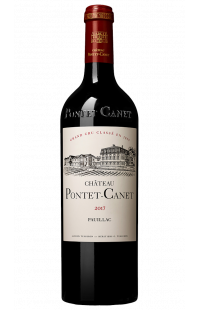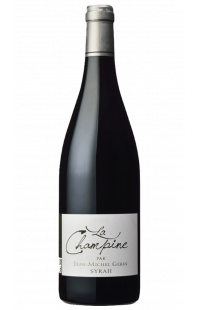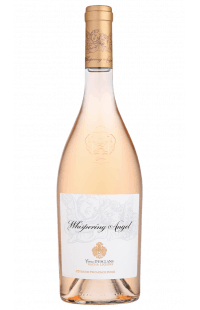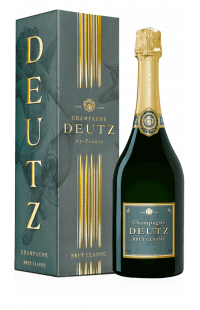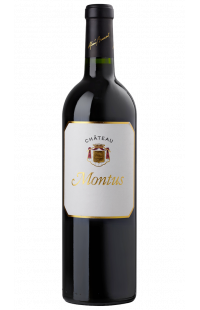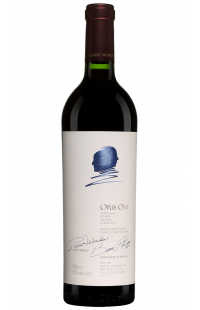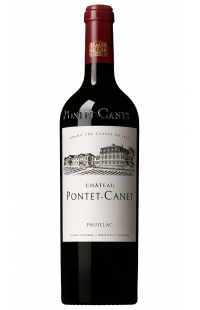- Menu
- All our wines
- Bordeaux
-
Rhône
-
Burgundy
-
Rosés Wines
-
Champagne
- France
-
World
- PRIMEURS
- ORGANIC WINES
Barsac Wines
- Discover all our great sweet wines from Barsac -
The Wines of Barsac: A Sweet Treasure of Sauternes
Introduction
The Bordeaux wine region, renowned worldwide for its exceptional wines, is home to an appellation in the south that stands out for its sweet white wines: Barsac. Nestled in the heart of Sauternes, this appellation shares with Sauternes unique characteristics that make it one of the oenological wonders of the region. Barsac wines are mainly composed of grape varieties such as Sémillon, Muscadelle, and Sauvignon. What makes them particularly unique is the phenomenon of "noble rot," which imparts an exceptional concentration of sugar in the grapes, resulting in sweet, luscious wines that are also fresh and fruity. This article explores in depth the historical, geographical, technical, and sensory aspects of Barsac wines.
History and Geography of Barsac
Origins and Historical Development
The history of viticulture in Barsac dates back several centuries. As early as the Middle Ages, Cistercian monks cultivated vines in this region. However, it was in the 18th century that Barsac, along with its neighbor Sauternes, gained international renown. At that time, sweet wines became highly prized in the royal courts of Europe, notably in England and Russia. Winemaking techniques and the art of viticulture were refined, and producers in Barsac began to distinguish themselves by the exceptional quality of their wines.
A Unique Terroir
Barsac is located on the left bank of the Garonne River, in an area where the geographical and climatic conditions are particularly conducive to producing sweet wines. The soil of Barsac is essentially composed of gravel, limestone, and sand, which promotes good drainage and allows vine roots to penetrate deeply to draw necessary nutrients. Moreover, the proximity of the Ciron River, a tributary of the Garonne, creates an ideal microclimate. The morning mists generated by the Ciron favor the development of Botrytis cinerea, or "noble rot," necessary for the production of sweet wines.
The Grape Varieties of Barsac
Sémillon: The Pillar of Barsac
Sémillon is the main grape variety used in Barsac wines, often representing the majority of the blend. This grape is particularly susceptible to noble rot, making it an ideal choice for sweet wines. Sémillon brings a creamy texture, richness on the palate, and aromas of honey, candied fruits, and dried apricot to Barsac wines.
Sauvignon Blanc: Freshness and Acidity
Sauvignon Blanc is also present in Barsac wines, although generally in smaller proportions compared to Sémillon. This grape adds a touch of freshness and acidity, balancing the richness of Sémillon and adding notes of citrus, green apple, and sometimes a hint of herbaceousness. This contribution is crucial to ensure a harmonious balance in the final wine.
Muscadelle: Aromatic Complexity
Muscadelle is the third grape variety used in the blend of Barsac wines. Although often in the minority, it plays an important role in adding floral aromas and complexity. Muscadelle contributes nuances of white flowers, fresh grape, and sometimes exotic fruits, thus enriching the wine's aromatic profile.
Noble Rot: A Magical Phenomenon
Botrytis Cinerea
"Noble rot" is a natural phenomenon caused by a fungus, Botrytis cinerea. When conditions are right—humidity in the morning and sunshine in the afternoon—this fungus attacks the grapes, perforating their skin and allowing partial evaporation of the water contained in the berries. This process concentrates sugars and aromas while developing unique aromatic compounds.
Effects on Grapes and Wine
Grapes affected by noble rot take on a confit, almost shriveled appearance, but retain a richness in sugar and acid that is fundamental to the wine's balance. This concentration of sugar allows for the production of sweet wines with high alcohol content and marked sweetness, while the grape's natural acidity preserves freshness and prevents the wine from becoming too heavy.
Winemaking of Barsac Wines
Hand Harvesting
The production of Barsac wines requires meticulous attention from the harvest onwards. The grapes are hand-picked, with several successive passes through the vineyards to collect only the grapes perfectly affected by noble rot. This method, called "successive selections," is laborious but essential to guarantee the wine's quality.
Pressing and Fermentation
After harvest, the grapes are gently pressed to extract the sweet, concentrated juice. Fermentation then takes place in stainless steel tanks or oak barrels, at controlled temperatures to preserve delicate aromas. Fermentation can be long, sometimes several months, due to the high sugar content of the musts.
Aging and Maturation
Once fermentation is complete, Barsac wines are often aged in oak barrels for 12 to 24 months. This aging period allows the wine to refine, acquire notes of vanilla, caramel, and spices, and develop additional complexity. Some producers opt for longer aging to add even more depth and richness to the wine.
Sensory Characteristics of Barsac Wines
Visual
Barsac wines are distinguished by their golden color, sometimes with amber highlights over time. This intense color is a sign of the concentration of the grapes and barrel aging.
Aroma
On the nose, Barsac wines offer a rich and complex aromatic palette. One finds aromas of candied fruits (apricot, peach), honey, white flowers, and more exotic notes like pineapple and mango. With age, nuances of caramel, hazelnut, and white truffle may also appear.
Palate
On the palate, Barsac wines are unctuous and velvety, with a beautiful freshness brought by the grape's natural acidity. The richness in sugar is perfectly balanced by this acidity, avoiding any heaviness and giving the wine great elegance. Flavors of candied fruits and honey dominate, accompanied by spicy and woody notes due to barrel aging.
Food and Wine Pairings
Due to their complexity and sweetness, Barsac wines are ideal companions for many dishes. Their freshness and richness allow for varied gastronomic pairings.
Cheeses
Barsac wines pair perfectly with blue-veined cheeses like Roquefort or Stilton. The wine's sweetness balances the salty and spicy character of the cheese, creating a delicious harmony.
Foie Gras
The classic pairing of foie gras and sweet wine finds sublime expression with Barsac wines. The richness and unctuousness of the wine complement the silky texture and delicate flavors of foie gras.
Desserts
Fruit desserts, especially those based on pears, peaches, or apricots, pair well with Barsac wines. Tarte Tatin, crumbles, and cream-based desserts like crème brûlée also benefit from the wine's aromatic complexity and sweetness.
Conclusion
Barsac wines represent a true treasure of French viticulture. Thanks to unique geographical conditions and ancestral viticultural techniques, these wines offer an unparalleled sensory experience. Their aromatic complexity, unctuousness on the palate, and perfect balance between sweetness and freshness make them exceptional wines, sought after by enthusiasts and connoisseurs worldwide. Whether to accompany refined dishes or to be enjoyed on their own, Barsac wines are a celebration of winemaking expertise and the terroir of Sauternes.
